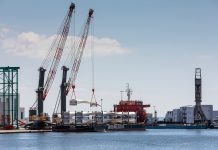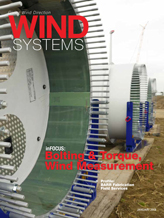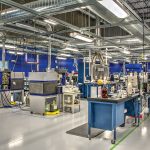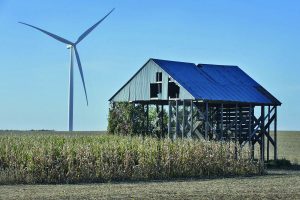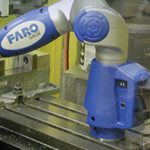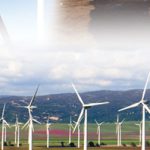BARR Fabrication, founded in 2000 in central Texas, was manufacturing large quantities of wind internals for the industry. Companies started coming to BARR with questions about how to service and repair wind towers. That began BARR’s work on wind towers. It was a natural progression to create a service company to continue to meet this customer need full time.
In 2006, BARR Fabrication Field Services began.
“The field service company was born from the fabrication company,” said Rebecca Wiles, operations manager of BARR Field Services. “The fabrication company was manufacturing internals at the time. And the service company was created to meet those customer needs for repairs. Our crews are uniquely qualified from the manufacturing side to conduct repairs.”
Since its inception 12 years ago, BARR Field Services has offered a variety of services to the industry, as well as experience and innovation that keeps the company at the head of its game.
“Outside the box”
According to Jimmie Simmons, field service manager, the services offered go beyond the norm.
“We offer a wide variety of different services,” he said. “We perform a lot of services that are outside the box. Most people do not realize some of the repairs we do are possible.”
Those services include dent removal, bolt extractions, flange pushes, up-tower and down-tower weld repairs, paint repairs, tower remediation, oil changes, and flange flatness. The fabrication company supports their efforts, supplying standard or specialty parts and tooling.

“We are often called to perform paint repairs and tower remediation jobs,” Simmons said. “A remediation is when a tower has been burned up, burned out, or caught on fire and we completely redo all the metal work, refinish them, and reinstall the parts.”
A popular request from customers is using BARR’s innovative and patented Dent Push System and Method to remove dents on a variety of different towers, according to Simmons.
“It’s a system that the company has developed to push a dent out of the side of a tower,” he said. “The tower can get a dent during transportation, mishaps in the yard, or general mishandling by a crane. We come on site and push the dent to get the tower back to OEM specs.”
Bolt repair is also a large part of BARR’s services, according to Simmons.
“Part of the bolting repairs that we perform include drilling and extracting bolts that have been broken off during construction, a repair, or a repower,” he said.
The bolting service includes a wide range of bolt sizes from as small as 10 millimeters up to 64 millimeters and larger, Simmons said.
“Every bolt is different,” said Senior Tech Dallas Walters. “For example, some are outside the tower on the blade. That requires unique tooling as compared to a bolt at the base. We have to make sure we put the right equipment in the right spot. It’s a very interesting, ever-changing job.”
Oftentimes, after a bolt has been installed, Walters said torqueing is also involved.
“Sometimes the customer wants us to torque the bolt, just to torque it down, so it holds their equipment in place,” he said. “And we have a specific procedure for doing that as well.”

Perfect safety rating
Job sites have a lot of moving parts, which exposes crews to the potential for accidents. Therefore, it is no small feat that BARR Field Services can document a perfect safety rating, according to Wiles.
“Our perfect safety rating gives the customer that confidence that when we come out to do something that’s never been done, we’re going to do it in the safest manner possible,” she said.
That safety-first mentality dovetails into how BARR approaches and interacts with its customers.
How a job starts
“We consider our clients part of our team. They’ll come to us when they are not quite sure how to solve the problem, and together we create the best solution possible for their specific concern,” Wiles said. “Each problem is unique, and we need to understand exactly what they are looking to accomplish. For example, specialty tooling and parts may need to be fabricated or machined to aid the crew’s mechanical expertise in making the onsite repair. We often work through multiple solutions with a client until we find what fits their exact needs.”
Simmons agreed.
“Working with customers and their engineer group is one of our biggest strengths, because we can speak the same language,” he said. “We’ve been very blessed to have the confidence of our customers to call and say, ‘hey, we broke this, how can you fix it?’”
BARR then sits down with the customer, its engineering staff, and sometimes the customer’s customer is involved to identify and solve the problem.
“Once we identify what the problem is, we pull on our history of experience and knowledge of our staff to troubleshoot the best possible solutions for the clients,” Wiles said. “Throughout the years, we have documented the procedures, and standardized them for our crews.”
BARR’s crews are qualified to its own and customer’s procedures and specifications to complete the work. When it is time to talk job execution, Simmons said he and the project manager begin discussing the schedule and the equipment needed.
“The biggest part on my side is getting the crews all the job details and ready to go,” he said. “I make sure they have everything they need, including safety equipment and tooling. This ensures that once they arrive, we get everything done in a safe and timely manner.”
Responding quickly
“The biggest thing that sets us apart is our ability to respond quickly,” Simmons said. “We understand how the metal is going to react and what it’s going to do when we drill, cut, or weld in a certain spot because of our fabrication background.”
“Most of customer’s needs are immediate, we are working to strategically place our crews throughout the U.S. right now, so we can respond faster to the needs of our customers in order to continue to have a 100 percent satisfaction rating,” Wiles said.
The company’s expansion is a testament to its quality of work and customer service.

Service: Job 1
As the wind industry continues to grow, Wiles said she expects BARR will continue to remain focused on being a service company, an area she said she expects to keep BARR busy.
“We recognize that service and project management are things that we do well,” she said. “We’ve got a uniquely qualified work force from working on the manufacturing side; they understand all the customer’s expectations. It’s not just going out and taking a bolt out. Meeting the customer’s needs includes documentation requirements. We recognize that we’ve got to provide documentation to the customer and to the engineering group so that they can sign off on the tower. As towers age, our business will grow as part of the support needed to continue the effective operation of the industry, the efforts required to keep the towers running.”
Simmons said wind farms repowering older towers also would continue to allow BARR to do what it does best.
“That helps a lot on our side of the business, just because some of the things that they’re running into trying to retrofit things and making things work,” he said. “That ensures our services are needed.”
Jobs of all sizes
Another part of BARR’s strengths lies in its ability to work on jobs of all sizes, according to Wiles.
“Sometimes, a job might have just one or two bolts, sometimes they have several,” she said. “Same with weld repairs. We’ve worked on weld repairs that are 50-plus wind towers, welding gen frames and the bedplates, to installing cooling systems for a site with over a hundred towers.”
A recent remediation job involved more than 100 towers and every section needed some degree of repair. BARR’s goal was to get the towers back to OEM specs before the construction cranes on site reached them to put them up, according to Wiles.
“At BARR we’ve worked on all kinds of projects — large and small, projects that last just a few days to projects that last six months or more,” she said.

















